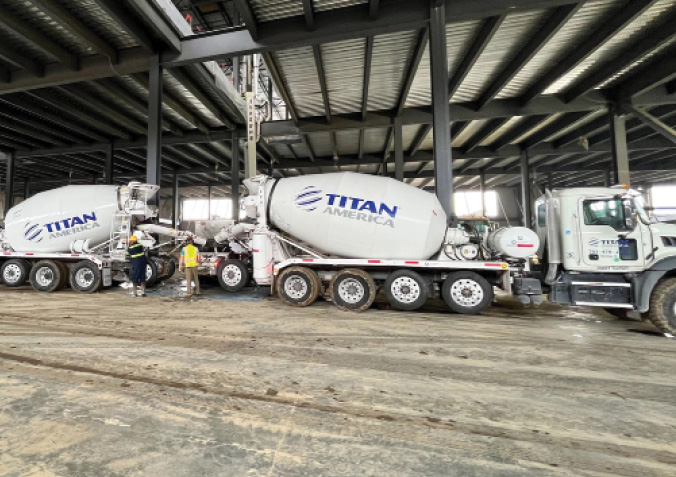
Amazon Web Services Director of Sustainability Chris Walker cites savings of 22,000-plus tons of carbon dioxide equivalent (tCO2e) in 2023 across 27 data center construction material schedules, owing to specification of lower carbon concrete and steel where possible. Coupled with the tCO2e metric, AWS continuously evaluates design criteria with an eye to streamlining material requirements “for everything from server racks to office spaces and storage rooms.”
AWS has worked with Ash Grove Cement, Holcim US and Titan America to test performance and strength development properties of proposed concrete mixes designed with lower carbon alternatives to conventional formulations. “After trial batching a mixture for a data center construction project in northern Virginia, concrete supplier [Titan] was able to replace 40 percent of the ordinary cement with slag, while still meeting schedule constraints,” Walker observes. Compared to a mix with portland cement as the sole binding agent, he adds, “We cut embodied carbon in the cement [blend] by more than 30 percent.”
“Developing the right combinations of lower-carbon cement materials while maintaining performance and construction schedules can be a challenge,” affirms Titan America Vice President of Innovation and Quality Eric Koehler. “We’re collaborating with AWS to test and deploy options to identify and scale effective concrete mix designs.”

HOT ROLLED SECTIONS
Rounding out the embodied carbon equation in data center structural material specs is steel, whose high temperature processing requirements match or surpass those of portland cement production. “Globally, the most popular manufacturing method for steel is the basic oxygen furnace (BOF), which burns coal or gas. But rather than relying on fossil fuels, steel can also be produced in electric-arc furnaces (EAF) that use scrap and are powered by energy from the grid—in some cases from renewable sources,” Walker writes. “In 2021, we began purchasing EAF steel for data centers, which commonly amounts to half of the embodied carbon compared to BOF steel production, and can even achieve as low as one-fifth.” Further carbon savings have been realized by using higher strength structural steel, where possible, to reduce overall tonnage in data center material schedules, he adds.
“Amazon is helping to bridge the innovation gap by investing in lower-carbon concrete and steel technologies through the Climate Pledge Fund, a $2 billion venture investment program supporting the development of sustainable technologies and services that will enable us to meet our net-zero carbon goal,” Walker concludes. “Among the early-stage companies that we’ve invested in is Brimstone, a startup that is developing the first carbon negative process for cement manufacturing, which starts with carbon-free calcium silicate rock instead of limestone. Another is Electra, a company that produces iron at lower temperatures using low-grade iron ores and renewable energy. We intend to use innovative materials like these when they become technically viable and commercially available, and we’ll continue investing resources to support their development.”